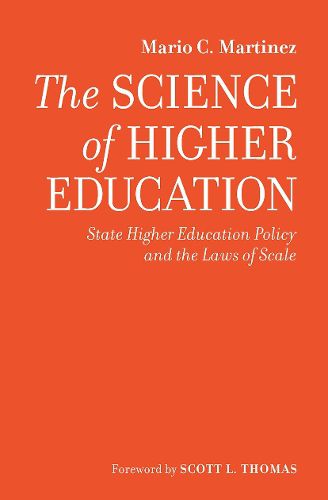Readings Newsletter
Become a Readings Member to make your shopping experience even easier.
Sign in or sign up for free!
You’re not far away from qualifying for FREE standard shipping within Australia
You’ve qualified for FREE standard shipping within Australia
The cart is loading…






Among other commonly held beliefs about the drivers of postsecondary policy and financing, this book questions the current use of funding per student as the dominant indicator of the adequacy of state investment in higher education, and as a key driver of the costs of college.
State legislators balance the competing needs of education, health, transportation, and public safety budgets, and increasingly ask what return (ROI) they get for the funding they provide, including from higher education. This question means the forty-year era of advocating for higher education by comparing funding per student to a national average or last year’s result is no longer an effective gauge of funding adequacy for state policymakers.
The Science of Higher Education is an introduction to a new paradigm that explores state higher education funding, enrollment, completion, and supply (the number and type of institutions in a state) through the lens of what are commonly known as power laws. Power laws explain patterns in biological systems and characteristics of cities. Like cities, state higher education systems are complex adaptive systems, so it is little surprise that power laws also explain funding, enrollment, completion and supply.
The scale relationships uncovered in The Science of Higher Education suggest the potential benefits state policymakers could derive by emphasizing enrollment, completion or capacity policies, based on economies of scale, marginal benefits, and the return state’s get on enrollment and completion for the funding they provide.
The various features of state higher education systems that conform to scale patterns do not alone provide definitive answers for appropriate funding levels, however. As this book addresses, policy makers need to take into account the macro forces, from demography to geography and the economy, that situate the system, as well the interactions between government and market actors that are at the core of every state higher education system and influence the outcomes it achieves.
$9.00 standard shipping within Australia
FREE standard shipping within Australia for orders over $100.00
Express & International shipping calculated at checkout
Among other commonly held beliefs about the drivers of postsecondary policy and financing, this book questions the current use of funding per student as the dominant indicator of the adequacy of state investment in higher education, and as a key driver of the costs of college.
State legislators balance the competing needs of education, health, transportation, and public safety budgets, and increasingly ask what return (ROI) they get for the funding they provide, including from higher education. This question means the forty-year era of advocating for higher education by comparing funding per student to a national average or last year’s result is no longer an effective gauge of funding adequacy for state policymakers.
The Science of Higher Education is an introduction to a new paradigm that explores state higher education funding, enrollment, completion, and supply (the number and type of institutions in a state) through the lens of what are commonly known as power laws. Power laws explain patterns in biological systems and characteristics of cities. Like cities, state higher education systems are complex adaptive systems, so it is little surprise that power laws also explain funding, enrollment, completion and supply.
The scale relationships uncovered in The Science of Higher Education suggest the potential benefits state policymakers could derive by emphasizing enrollment, completion or capacity policies, based on economies of scale, marginal benefits, and the return state’s get on enrollment and completion for the funding they provide.
The various features of state higher education systems that conform to scale patterns do not alone provide definitive answers for appropriate funding levels, however. As this book addresses, policy makers need to take into account the macro forces, from demography to geography and the economy, that situate the system, as well the interactions between government and market actors that are at the core of every state higher education system and influence the outcomes it achieves.